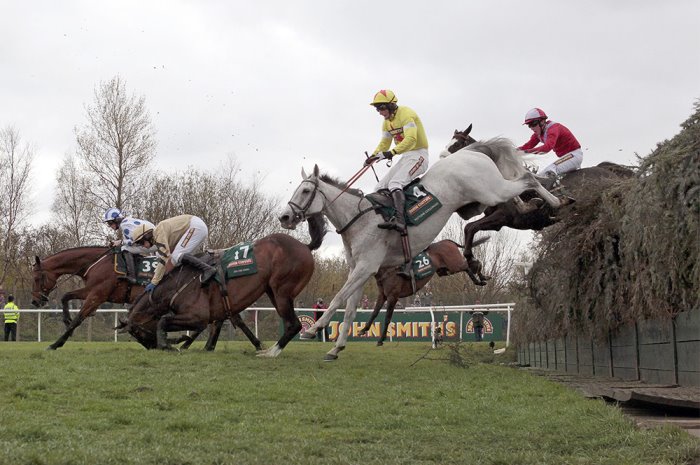What Distance Is The Grand National
Previously, the Grand National was advertised as four miles three-and-a-half furlongs, but this has now been reduced by a furlong. It is now advertised as four miles, two furlongs and 74 yards. Recent travelers warned a stop at the Skywalk is an all-day endeavor since it's a long distance from other points of interest (about four hours from the Grand Canyon Village).
Calculations of sunrise and sunset in Grand Canyon National Park – Arizona – USA for March 2021. Generic astronomy calculator to calculate times for sunrise, sunset, moonrise, moonset for many cities, with daylight saving time and time zones taken in account.

What Distance Is The Grand National Racing
Points of Interest & Landmarks 5. We found 53 things to do for you near Grand Canyon National Park. Adjacent to El Tovar, Grand Canyon South Rim, Grand Canyon National Park, AZ. 1 minute from Grand Canyon National Park. See some of the Grand Canyon's most popular landmarks on this incredible 40-minute, fixed-wing airplane adventure. Enjoy aerial views of the Grand Canyon’s East Rim, the Painted Desert of badlands, located in the Four Corners area from Grand Canyon National Park into Petrified Forest National Park and Imperial Point, the Grand Canyon’s highest spire.
Our editors will review what you’ve submitted and determine whether to revise the article.
 Join Britannica's Publishing Partner Program and our community of experts to gain a global audience for your work!
Join Britannica's Publishing Partner Program and our community of experts to gain a global audience for your work!  The Editors of Encyclopaedia Britannica
The Editors of Encyclopaedia BritannicaGrand Canyon, immense canyon cut by the Colorado River in the high plateau region of northwestern Arizona, U.S., noted for its fantastic shapes and coloration.
What Distance Is The Grand National Golf
The Grand Canyon lies in the southwestern portion of the Colorado Plateau, which occupies a large area of the southwestern United States and consists essentially of horizontal layered rocks and lava flows. The broad, intricately sculptured chasm of the canyon contains between its outer walls a multitude of imposing peaks, buttes, gorges, and ravines. It ranges in width from about 175 yards (160 metres) to 18 miles (29 km) and extends in a winding course from the mouth of the Paria River, near Lees Ferry and the northern boundary of Arizona with Utah, to Grand Wash Cliffs, near the Nevada state line, a distance of about 277 miles (446 km); the first portion of the canyon—from Lees Ferry to the confluence with the Little Colorado River—is called Marble Canyon. The Grand Canyon also includes many tributary side canyons and surrounding plateaus.

The greatest depths of the Grand Canyon lie more than a mile (some 6,000 feet [1,800 metres]) below its rim. The deepest and most spectacularly beautiful section, 56 miles (90 km) long, is within the central part of Grand Canyon National Park, which encompasses the river’s length from Lake Powell (formed by Glen Canyon Dam in 1963) to Lake Mead (formed by Hoover Dam in 1936). The North Rim, at approximately 8,200 feet (2,500 metres) above sea level, is some 1,200 feet (365 metres) higher than the South Rim. In its general colour, the Grand Canyon is red, but each stratum or group of strata has a distinctive hue—buff and gray, delicate green and pink, or, in its depths, brown, slate-gray, and violet.
Geologic history
Although its awesome grandeur and beauty are the major attractions of the Grand Canyon, perhaps its most vital and valuable aspect lies in the time scale of Earth history that is revealed in the exposed rocks of the canyon walls. No other place on Earth compares to the Grand Canyon for its extensive and profound record of geologic events. The canyon’s record, however, is far from continuous and complete. There are immense time gaps; many millions of years are unaccounted for, owing to gaps in the strata that resulted either from vast quantities of materials being removed by erosion or because there was little or no deposition of materials. Thus, rock formations of considerably different ages are separated by only a thin distinct surface that reveals the vast unconformity in time.
Briefly summarized, the geologic history of the canyon strata is as follows. The crystallized, twisted, and contorted unstratified rocks of the inner gorge at the bottom of the canyon are Archean granite and schist more than 2.5 billion years old. Overlying those very ancient rocks is a layer of Proterozoic limestones, sandstones, and shales that are more than 540 million years old. On top of them are Paleozoic rock strata composed of more limestones, freshwater shales, and cemented sandstones that form much of the canyon’s walls and represent a depositional period stretching over 300 million years. Overlying those rocks in the ordinary geologic record should be a thick sequence of Mesozoic rocks (about 250 to 65 million years old), but rocks dating from the Mesozoic Era in the Grand Canyon have been entirely eroded away. Mesozoic rocks are found nonetheless in nearby southern Utah, where they form precipitous butte remnants and vermilion, white, and pink cliff terraces. Of relatively recent origin are overlying sheets of black lava and volcanic cones that occur a few miles southeast of the canyon and in the western Grand Canyon proper, some estimated to have been active within the past 1,000 years. (See alsoGrand Canyon Series.)
The cutting of the mile-deep Grand Canyon by the Colorado River is an event of relatively recent geologic history that began not more than six million years ago, when the river began following its present course. The Colorado River’s rapid velocity and large volume and the great amounts of mud, sand, and gravel it carries swiftly downstream account for the incredible cutting capacity of the river. Before Glen Canyon Dam was built, the sediments carried by the Colorado River were measured at an average of 500,000 tons per day. Conditions favourable to vigorous erosion were brought about by the uplift of the region, which steepened the river’s path and allowed deep entrenchment. The depth of the Grand Canyon is the result of the cutting action of the river, but its great width is explained by rain, wind, temperature, and chemical erosion, helped by the rapid wear of soft rocks, all of which steadily widened the canyon. An experiment was conducted in March 2008, in which water equivalent to about 40 percent of the river’s original flow was released from Glen Canyon Dam for a period of 60 hours to measure the erosion and deposition of sediments along the river. Researchers monitoring the experiment noted additional sand deposition at numerous locations along the river following the release.
What Distance Is The Grand National 2020
The most significant aspect of the environment that is responsible for the canyon is frequently overlooked or not recognized. Were it not for the semiarid climate in the surrounding area, there would be no Grand Canyon. Slope wash from rainfall would have removed the canyon walls, the stair-step topography would long ago have been excavated, the distinctive sculpturing and the multicoloured rock structures could not exist, the Painted Desert southeast of the canyon along the Little Colorado River would be gone, and the picturesque Monument Valley to the northeast near the Utah state line would have only a few rounded hillocks.